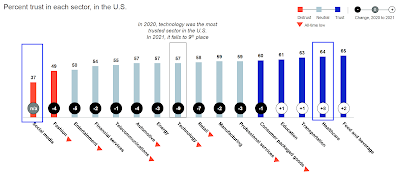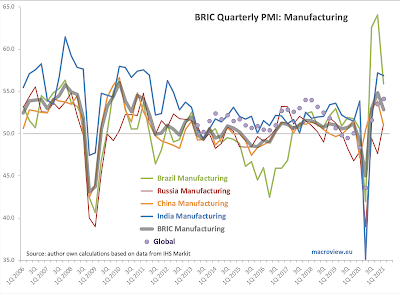One way to look at the state of the real (as opposed to financialized and corporate-value focused) economy is to look at unemployment. And one of the strongest indicators of longer term changes in the structure of the real economy is the fate of the longer term unemployed. Here is an interesting snapshot of data: the percentage of those unemployed for 27 week or longer in the total pool of the unemployed. The higher the number, the more structural is the unemployment problem.
All of the above suggests we are in deep trouble. And this trouble has been persistent since the Great Recession: we are witnessing a dramatic increase in the duration of unemployment spells. Part of this is due to the impact of Covid19 pandemic concentrated in specific sectors. Part of this is down to the generosity of unemployment benefits supplements and direct subsidies during the pandemic. Part of it is also down to the longer term changes in the U.S. labor markets and changes in households' composition and investment/consumption patterns.
Irrespective of the causes, the problem is obvious: the longer the person remains unemployed, the sharper is the depreciation of skills and their employability. If this (post-2008) experience is the 'new normal', America is developing a massive class of disillusioned and human capital poor workers.
























